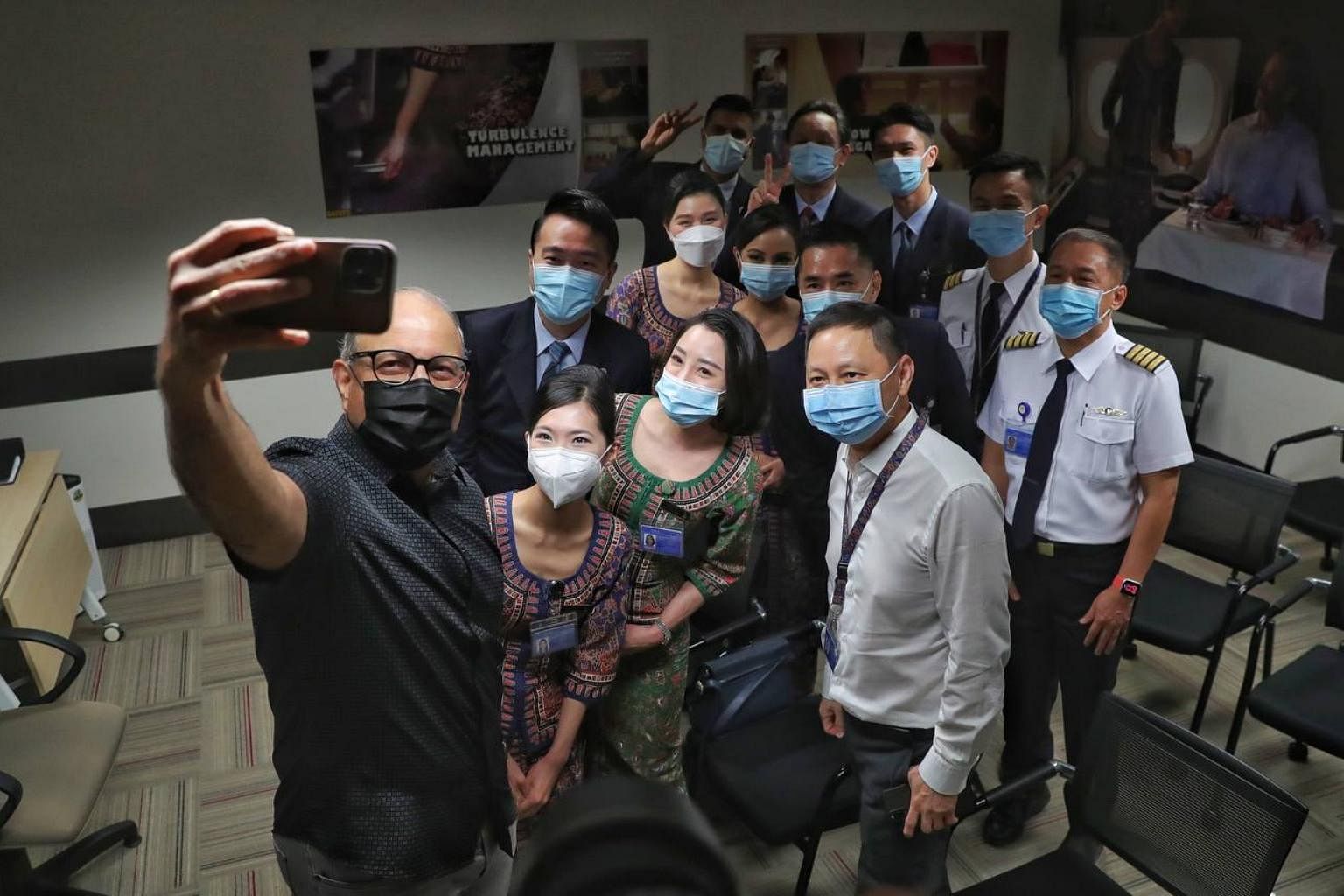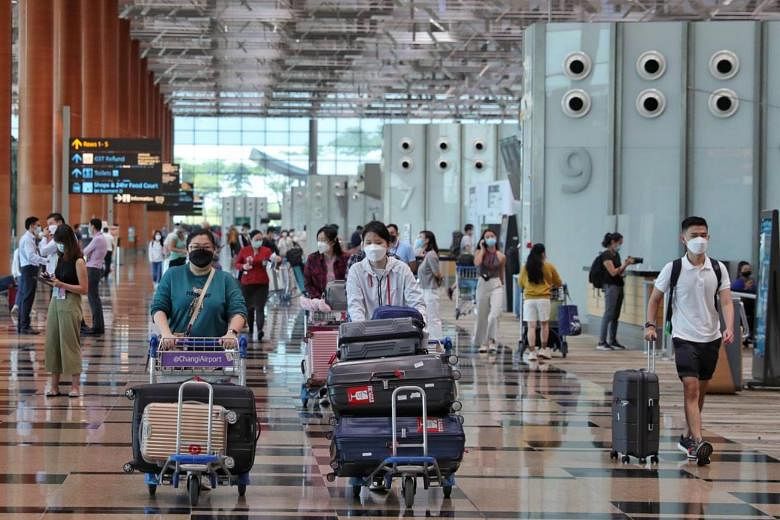SINGAPORE - The number of workers in the air transport sector is now at about two-thirds to three-quarters of the level before the pandemic, said Transport Minister S. Iswaran on Wednesday (March 30).
This is up from the lows during the pandemic, with some firms in the sector facing attrition rates as high as 50 per cent. The sector is now ramping up recruitment in preparation for more travellers from Friday (April 1), when Singapore's eased border rules kick in.
Mr Iswaran, who was speaking during a visit to Changi Airport, said: "It's a significant attrition we have had, and that is because it's an inevitable consequence of the circumstances that the aviation community was in because of the virus.
"But all the members of the aviation community are committed to making sure that they are gearing up ahead of demand."
He said that firms are recruiting workers from Singapore, Malaysia and other countries. But he also cautioned that time is needed to train the workers, and to get returning workers familiar with the new work processes.
The Government had announced last week that Singapore will allow all travellers who are fully vaccinated against Covid-19 to enter the country without quarantine from Friday.
They will have to take only a pre-departure Covid-19 test before flying into Singapore, and will no longer be subject to other requirements such as having to take designated flights.
Mr Iswaran said this was a significant move to reopen the country's borders. But he reiterated that the border policies are subject to change based on how the Covid-19 pandemic pans out.
"So a lot of the work that we are doing now is not just with respect to gearing up the capacity and opening up, but also to make sure that we have the capacity to pivot to a more conservative posture if the need arises," he said.
"Even as we gear up, it's important that we don't let our guard down."
Three million passengers passed through Changi Airport in 2021. This was just 4.4 per cent of the 68 million passenger movements registered in 2019, before the pandemic.
In the first two months of this year, 1.42 million passenger movements were registered - 13 per cent of the level before the pandemic.
As at this month, 81 airlines are operating more than 2,800 weekly flights to 116 cities across 46 countries and regions. In contrast, 91 airlines operated about 7,480 weekly flights in March 2019, connecting Changi to 164 cities across 48 countries and regions.
In another move, Changi Airport also removed restrictions on the people receiving passengers at the airport earlier this month. There are no longer any barricades in place to block off the arrival hall.

Those who need transportation from the airport to their next destination can now take public buses or the MRT, in addition to taxis, private-hire cars and personal transport.
While the move to reopen to all vaccinated travellers is expected to help the recovery of Singapore's air hub, industry observers said other obstacles remain.

For example, travellers from China, who were an important market segment for Singapore, are still unable to come to the Republic due to strict border restrictions there.
In response to a query about whether Singapore can achieve its goal of restoring passenger volumes to at least 50 per cent of the pre-pandemic level this year, Mr Iswaran said: "(For) the markets that are already open, if they come back to something like what they used to be, we will already be reaching those levels.
"But the journey is just as important as the destination, because it's about building confidence and restoring the capacity in the system across the whole value chain in aviation."



